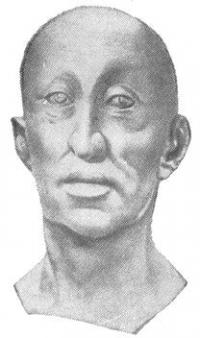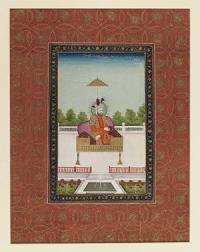You are here
Tombs of Shahrun - Miranshah.


The combined tours over Central Asia.
“If an ancient man saw planes two thousand years ago
He would've thought they were birds
Or angels from another world
Or messengers from other planets”
Dejan Stojanovic.
Take an excursion to Samarkand.
Shahruh (1377 - 1447) is buried to the west from Amir Temur in the marble sarcophagus, similar to sarcophagi of Muhammad-Sultan and Amir Temur. Being the youngest son of Amir Temur, Shahruh was enthroned in Khurasan with the capital in Heart, when he was just 20 and had reigned there for 50 years.
In 1409, upon the death of Amir Temur, Shahruh, driving for power, overcame his nephew Halil-sultan and became a king of centralized Temurid empire. The capital was transferred from Samarkand to Herat, and Maverannahr was given to the son of Shahruh Mirzo Ulugbeg.
Shahruh died at the age of 70 - 71, during a military campaign. Initially, Shahruh was buried in Herat at the mausoleum together with his son Baysunkar. Later, the remains were transported from Herat to Samarkand by his daughter Paende-Sultan-bike.
She built the tomb-sarcophagus, having the inscription in Persian with Arabian inserts: This is - the garden among paradise gardens, this is - the rosary among paradise rosaries, which is a place of eternal rest; this is - the paradise chamber of his majesty, died king; this is the house of deceased and forgiven padishah, the sultan of sultans, the assistant to the state, world and faith, Shah-Roh bahadur-sultan, let the Almighty Allah place him on a throne of His grace, give him a crown of honour.
In the sarcophagus there was a wooden box with 144 small river stones of grey and white color. Beside the tomb of Shahruh, there is a tomb of the third son of Amir Temur, Miranshah (1366 - 1408).
In 1380, when he was just 14, he headed a triumphal campaign to Khurasan and was appointed a governor of Khurasan. At the age of 20, Miranshah defeated the troops of Tokhtamish in the Caucasus.
In the battles with Tokhtamish in 1391 and 1395, he was a commander of the right wing of Amir Temur army. In the 1390s, he became a governor of the western lands of the empire. In 1399, his wife, Chinggisid princess Khan-zadeh accused Muranshah of mutiny.
Some his friends were executed to this case. In 1404, Amir Temur suspended Miranshah from the power and divided his domain between his sons. On the death of Amir Temur, the son of Miranshah, Halil-Sultan took the Samarkand throne. In 1408, Miranshah was killed in Azerbaijan during the war against the Turkmen, Qara-Koyunli.
Later his remains were transferred to Maverannahr and reburied in Gur-Emir. Miranshah is buried without a sarcophagus, unlike his relatives, in a ground grave with light brick fence around. A gravestone was not installed above the tomb.
The gravestone in the upper hall is made of black marble. The Arabic inscription repeats genealogy from the gravestone of Amir Temur with indication to cognation of the Temurids and Chinggisids, both coming from saint foremother Alankuva and a descendant of Lion of Allah, the winner, СAli, the son of Abu Talib.
Authority:
Alexey Arapov. Samarkand. Masterpieces of Central Asia. Tashkent, Sanat. 2004.







